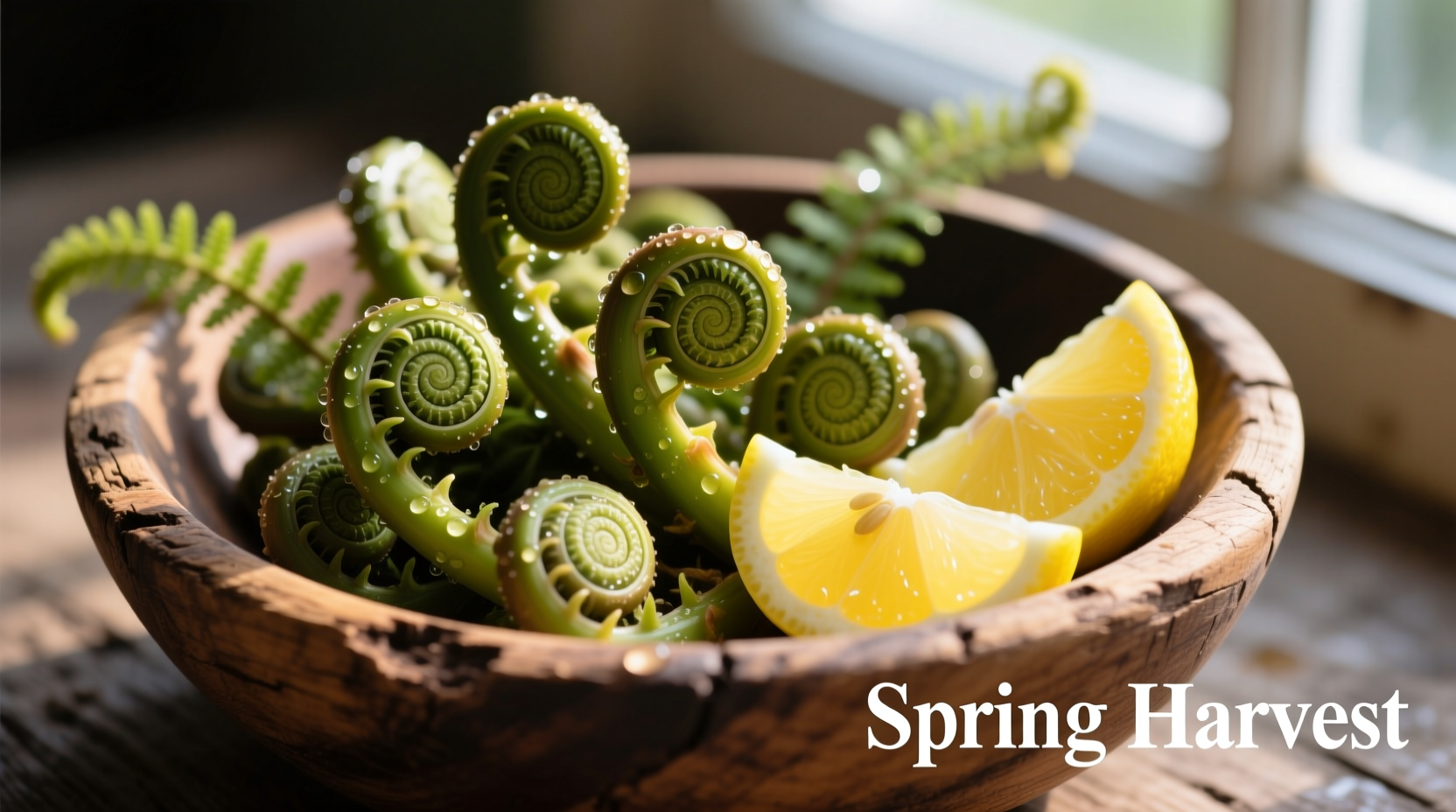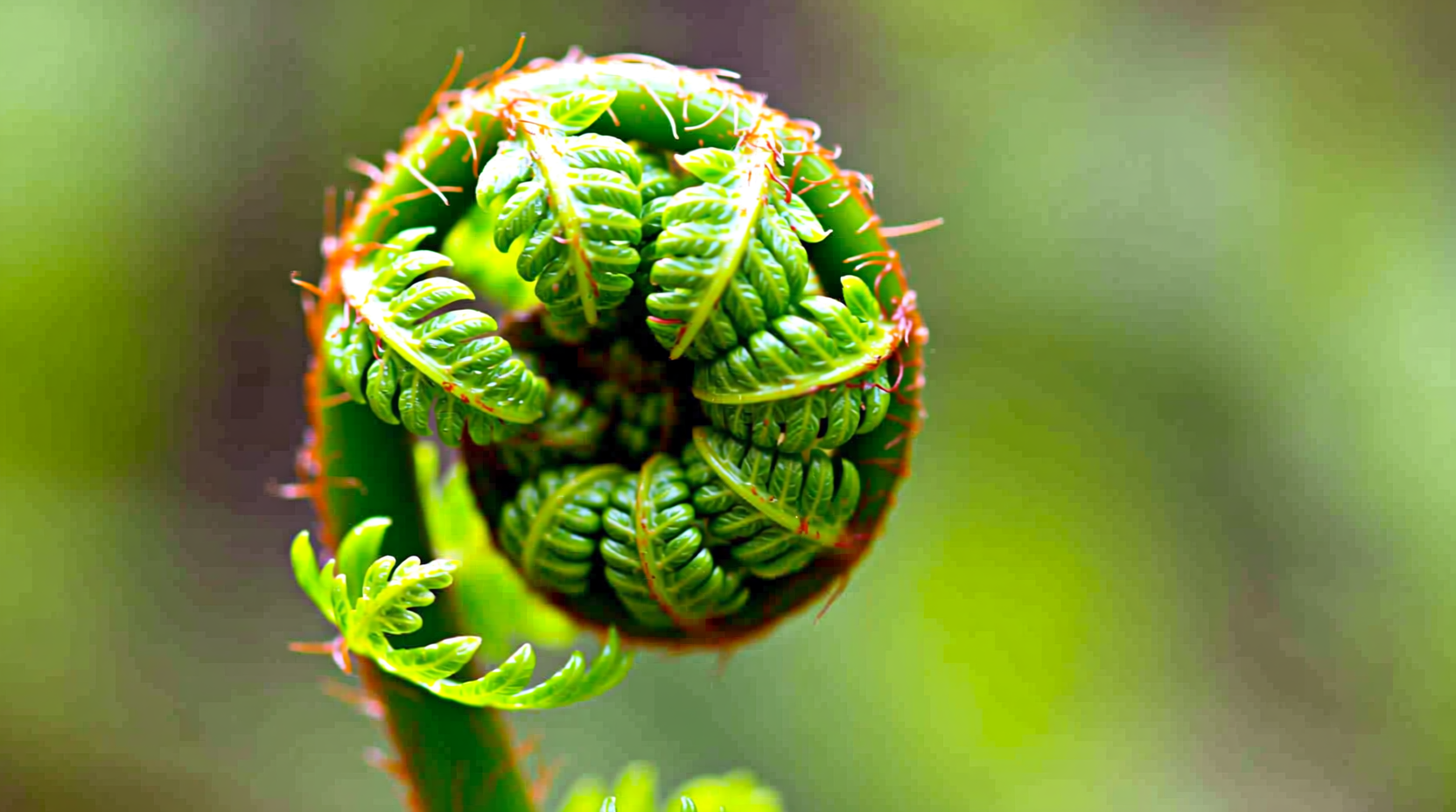Discover exactly what makes these springtime foraged treasures so special in your kitchen. Whether you've spotted them at your local farmers' market or are considering trying your hand at foraging, understanding fiddlehead flavor characteristics will help you prepare them perfectly and appreciate their seasonal uniqueness.
What Exactly Are Fiddleheads?
Fiddleheads are the tightly coiled fronds of young ferns, specifically the ostrich fern (Matteuccia struthiopteris), harvested in early spring before they unfurl. Named for their resemblance to the decorative scroll at the head of a violin (fiddle), these seasonal delicacies appear for just a few weeks each year, typically from late April to early June depending on your climate.
It's crucial to correctly identify fiddleheads before consumption, as some fern varieties are toxic. The edible ostrich fern has a distinctive brown, papery sheath covering the coil and a smooth groove running down the inside of the stem. Never consume ferns with fuzzy stems or those growing in clusters without the characteristic U-shaped groove.
Decoding the Fiddlehead Flavor Profile
When properly prepared, fiddleheads deliver a complex flavor experience that captures the essence of early spring. Their taste isn't easily replicated by any single vegetable, which is why they're so prized by chefs and foragers alike.
| Flavor Component | Description | Common Comparisons |
|---|---|---|
| Primary Taste | Crisp, fresh, mildly vegetal | Asparagus meets green beans |
| Secondary Notes | Subtle nuttiness, earthy undertones | Artichoke hearts, young spinach |
| Texture | Firm yet tender with slight crunch | Al dente green beans, fresh asparagus |
| Aroma | Grassy, slightly sweet, spring-like | Freshly cut grass, young peas |
Unlike many vegetables, fiddleheads don't have a dominant bitter or sweet profile. Instead, they offer a balanced, refreshing taste that's distinctly green without being overpowering. When raw, they have a slightly bitter edge and grassy quality, but proper cooking transforms them into something much more delicate and nuanced.
Factors That Influence Fiddlehead Flavor
Several elements affect how fiddleheads taste, making each harvest potentially unique:
- Harvest timing: The youngest, tightest coils (about 1-2 inches tall) offer the most delicate flavor and tender texture
- Freshness: Flavor degrades quickly—consume within 2-3 days of harvest for best results
- Preparation method: Boiling or steaming first removes bitterness before final cooking
- Soil composition: Location affects mineral content and subtle flavor variations
- Cooking technique: Quick sautéing preserves crispness while longer cooking creates more tender results
According to the University of Maine Cooperative Extension, proper preparation is essential not just for flavor but for safety. Fiddleheads contain small amounts of naturally occurring toxins that are eliminated through thorough cooking. Their research confirms that boiling fiddleheads for 10-15 minutes or steaming for 10-12 minutes significantly reduces any potential health risks while optimizing flavor development.

How to Select the Best Fiddleheads
Quality selection directly impacts your final dish's flavor. Look for these characteristics when choosing fiddleheads:
- Tight, firm coils with no signs of unfurling
- Bright green color without browning or yellowing
- Presence of the brown, papery husk covering (a sign of freshness)
- Firm texture when gently squeezed
- Size consistency within the bunch for even cooking
Avoid fiddleheads that feel slimy, have started to open, or show significant browning. Larger fiddleheads often develop a more fibrous texture and stronger flavor that some find less appealing.
Proper Preparation Techniques for Optimal Flavor
Many first-time fiddlehead eaters make the mistake of skipping proper preparation, resulting in bitterness or digestive discomfort. Follow these steps for the best flavor experience:
- Clean thoroughly: Soak in cold water and gently scrub to remove brown husk fragments
- Boil or steam first: Essential step to remove bitterness and ensure safety (10-15 minutes)
- Shock in ice water: Stops cooking process and preserves vibrant color and crisp texture
- Final cooking: Sauté with butter, olive oil, or bacon fat for 3-5 minutes with seasonings
Skipping the initial boiling step often results in fiddleheads that taste overly grassy or bitter. The Maine Organic Farmers and Gardeners Association emphasizes that proper preparation transforms fiddleheads from potentially unpleasant to exceptionally delicious.
Cooking Methods That Enhance Natural Flavor
Once properly prepared, fiddleheads shine with simple cooking techniques that highlight rather than mask their delicate flavor:
- Classic sauté: Toss with melted butter, lemon zest, and a pinch of sea salt
- Garlic companion: Sauté with minced garlic in olive oil for the last 2 minutes of cooking
- Bacon enhancement: Cook with diced bacon or pancetta for a savory contrast
- Lemon finish: A squeeze of fresh lemon juice just before serving brightens the flavor
- Simple steaming: Serve with a light vinaigrette for a clean, refreshing side
Professional chefs often recommend keeping preparations simple to appreciate fiddleheads' unique flavor. Overcomplicating with heavy sauces or strong spices can overwhelm their delicate taste profile. The James Beard Foundation notes that fiddleheads pair exceptionally well with spring ingredients like morel mushrooms, fresh peas, and young potatoes.
Perfect Flavor Pairings for Fiddleheads
Understanding what complements fiddlehead flavor helps create balanced dishes:
- Fats: Butter, olive oil, and bacon fat enhance their natural richness
- Acids: Lemon juice or vinegar cuts through any remaining earthiness
- Herbs: Dill, chives, and tarragon complement without overpowering
- Proteins: Works beautifully with salmon, chicken, or in vegetarian dishes
- Seasonings: Sea salt, white pepper, and a touch of nutmeg enhance natural flavors
Avoid pairing fiddleheads with strongly flavored ingredients like blue cheese or smoked meats that can dominate their subtle taste. Their delicate flavor shines brightest when treated as the star of the dish rather than a supporting ingredient.
Common Mistakes That Ruin Fiddlehead Flavor
Avoid these pitfalls to ensure your fiddleheads taste their best:
- Skipping the boil: Results in bitterness and potential digestive issues
- Overcooking: Creates mushy texture and dulls flavor
- Under-seasoning: Their mild flavor needs proper salt to shine
- Using old fiddleheads: Flavor deteriorates quickly after harvest
- Cooking with strong spices: Overpowers their delicate taste profile
Remember that fiddleheads continue to cook slightly after being removed from heat, so pull them off the stove just before they reach your desired tenderness. This preserves their signature crisp-tender texture that's essential to their appeal.
Why Fiddleheads Taste Different From Store-Bought Vegetables
Fiddleheads offer a unique flavor experience precisely because they're wild-harvested and seasonal. Unlike mass-produced vegetables bred for uniformity and shelf life, fiddleheads capture the terroir of their specific growing location and the fleeting essence of early spring.
Their flavor reflects the natural ecosystem where they grow—mineral-rich riverbanks with specific soil composition and microclimate conditions. This natural variation is part of what makes them so special to foragers and food enthusiasts seeking authentic seasonal experiences beyond standard grocery store produce.











 浙公网安备
33010002000092号
浙公网安备
33010002000092号 浙B2-20120091-4
浙B2-20120091-4